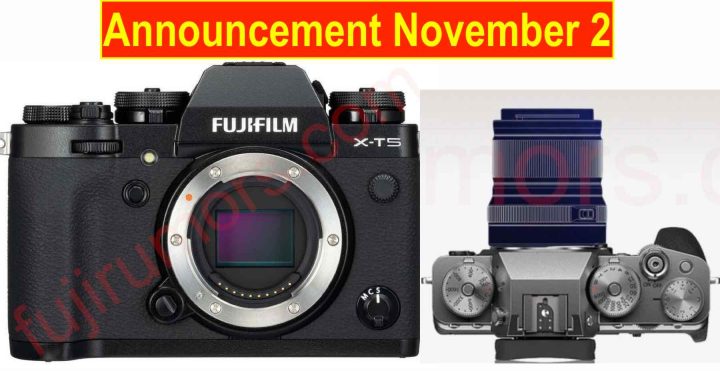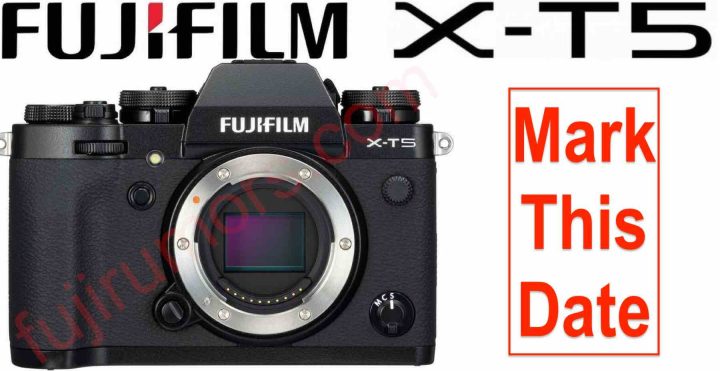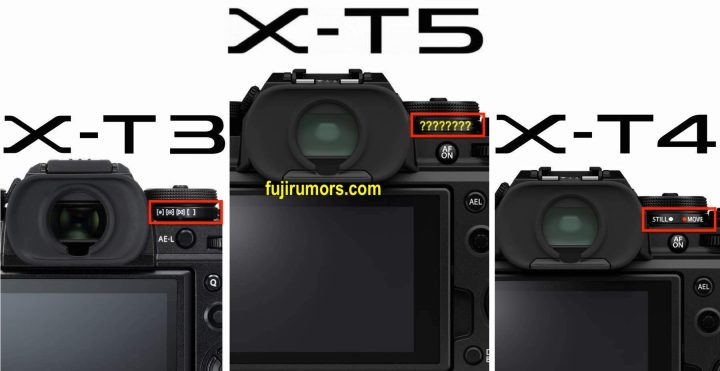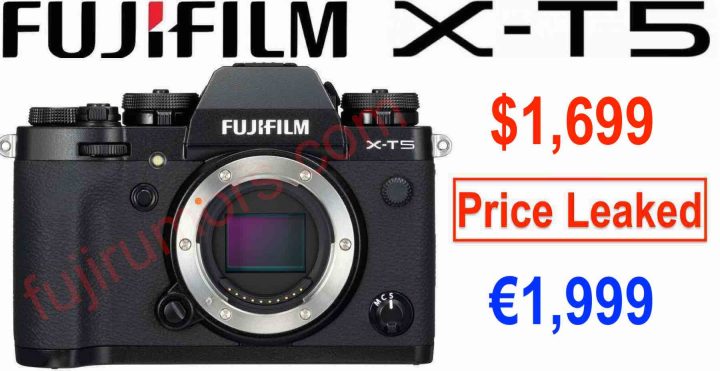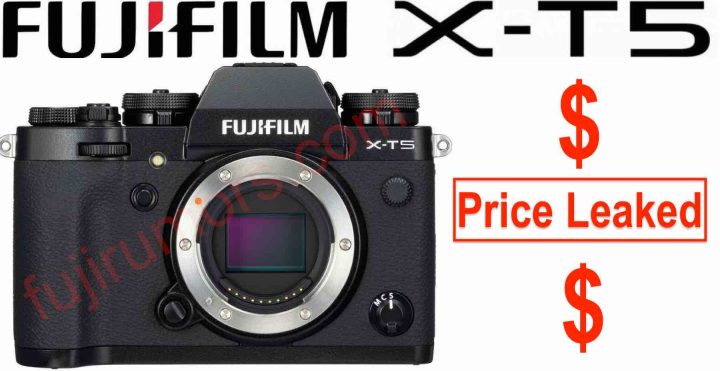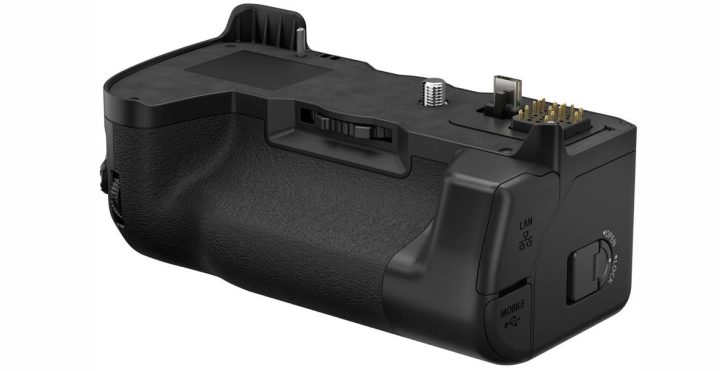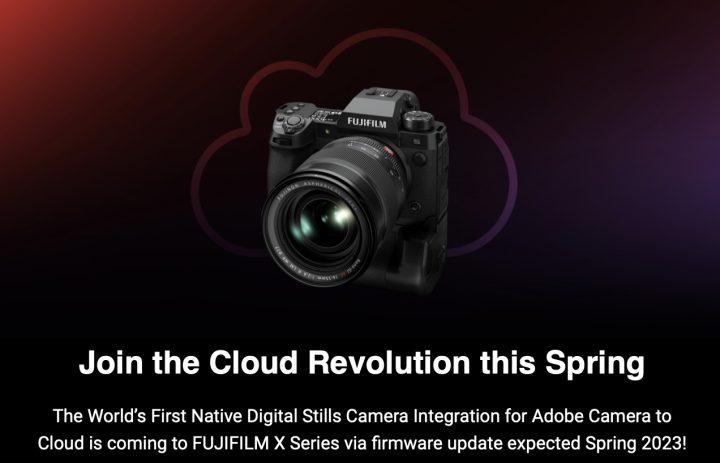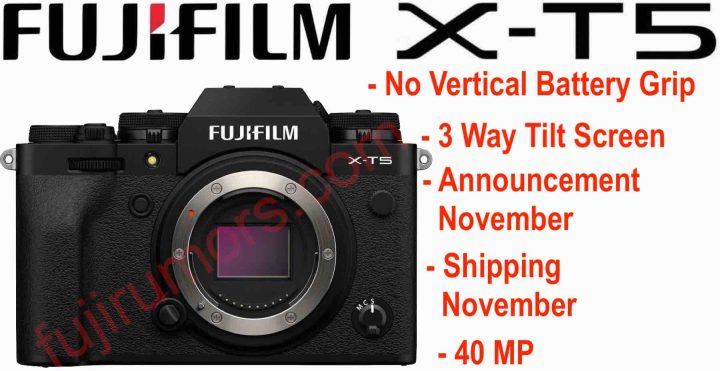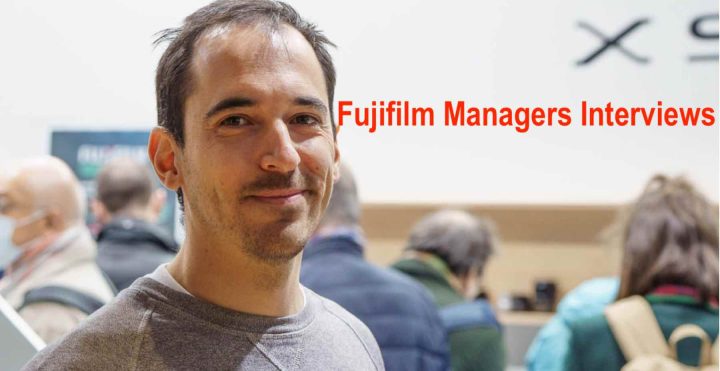Fujifilm X-T5 will NOT shoot 8K video
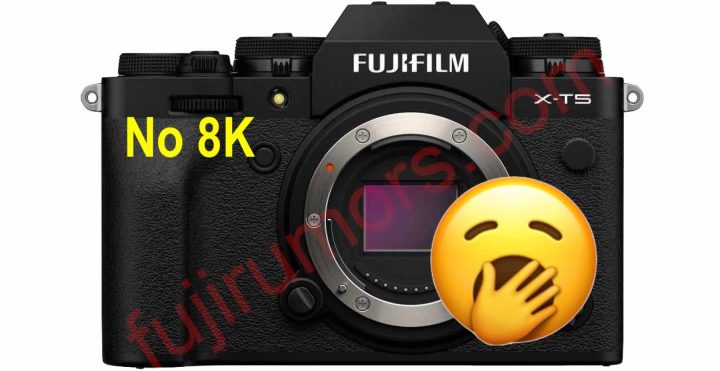
Yes, the Fujifilm X-T5 will have a 40 MP sensor.
And yes, the Fujifilm X-H2 with the same sensor can shoot 8K video
But according to our sources, the Fujifilm X-T5 will not be able to record 8K video.
I guess most of us in the market for an X-T5 will not care about 8K on X-T5. But I might be wrong, so feel free to vote the survey down below.
Fujifilm X-T5 rumors recap:
- announcement in November
- shipping in November
- 40 megapixel sensor of X-H2
- no stacked 26MP version planed
- no vertical battery grip option at all
- 3 way tilt screen
- X-T5 body only to cost $1,699 and €1,999
- Movie/Stills switch (no metering mode switch like on X-T3)
- X-T5 announcement November 2
- XF30mmF2.8 Macro Announcement November 2
- no 8K video
Follow FujiRumors on Facebook, Instagram, RSS-feed, Youtube, Flipboard and Twitter.
100% Fuji Colors Power
Rumors and Discussions

